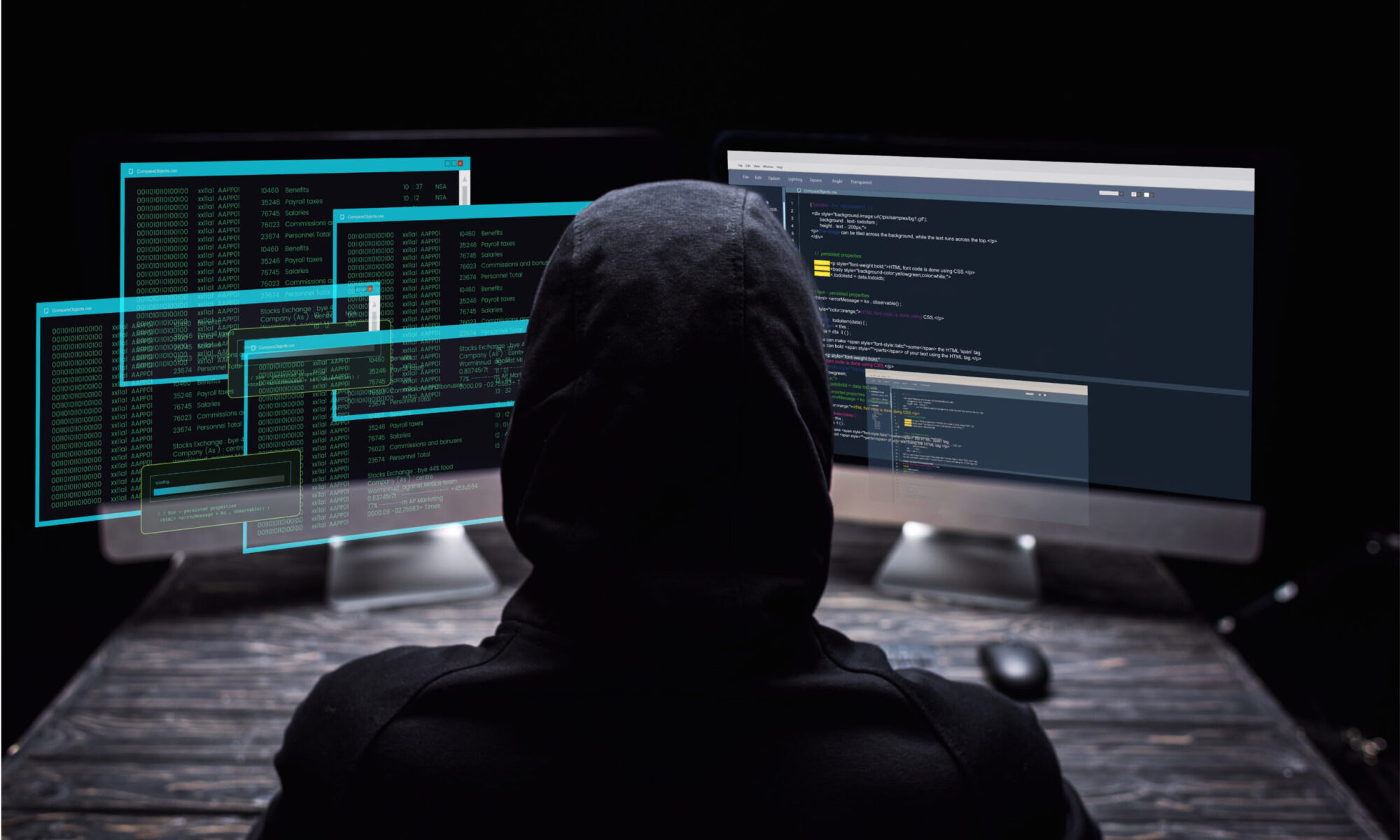I’m sick of scrounging hardware for writing books. I’m sick of waiting for things to compile, managing disk space, and running out of memory. I finally got so sick of it that I decided to invest some serious cash in a research machine, in the hope that I wouldn’t need to hunt hardware piecemeal for the next five to six years.
I solicited hardware advice from my modest horde of Twitter followers. After diving through realms of documentation, I came to realize that I didn’t want to build my own computer. I rarely configure, buy, or even touch hardware these days unless something goes unspeakably wrong, and there’s enough options out there that were I to attempt to do so, I’d waste both money and time. I certainly could figure it out, but that’s not where my strength is and the expertise I would acquire would be largely wasted outside this one task.
I wanted eight hard drives, so that when the time is right I can write about assorted ZFS configurations. I wanted some flash disk on top of that. I wanted enough oomph to run umpteen virtual machines simultaneously. And I didn’t want to spend a whole lot.
After wandering around the Internet, using assorted online system configuration tools to develop a rough idea of price, I contacted iX Systems and bought a system.
I now have a shiny new desktop system that can “portsnap fetch extract” in two minutes. Because SATA3 is pretty sweet. My only problem is that the portable version of cwm that @blooouuup found for me is really slow & clunky when resizing windows, but I’m sure if I whine at the right people someone will fix it for me. (Now to figure out who the right people are.)
For all those who asked me to share my shopping results: here’s a FreeBSD 11 dmesg. Thanks to bhyve, I can now run whatever I need. It lives under my desk, and is surprisingly quiet when I’m not building x11/xorg in 30 minutes or less. With WITNESS enabled.
iX Systems might not advertise desktop systems, but they’ll do a nice one for you. Even if yours isn’t as awesome as mine.
Copyright (c) 1992-2013 The FreeBSD Project.
Copyright (c) 1979, 1980, 1983, 1986, 1988, 1989, 1991, 1992, 1993, 1994
The Regents of the University of California. All rights reserved.
FreeBSD is a registered trademark of The FreeBSD Foundation.
FreeBSD 11.0-CURRENT #0 r260064: Mon Dec 30 16:28:06 UTC 2013
root@grind.freebsd.org:/usr/obj/usr/src/sys/GENERIC amd64
FreeBSD clang version 3.3 (tags/RELEASE_33/final 183502) 20130610
WARNING: WITNESS option enabled, expect reduced performance.
CPU: Intel(R) Xeon(R) CPU E5-1620 v2 @ 3.70GHz (3700.08-MHz K8-class CPU)
Origin = "GenuineIntel" Id = 0x306e4 Family = 0x6 Model = 0x3e Stepping = 4
Features=0xbfebfbff
Features2=0x7fbee3ff
AMD Features=0x2c100800
AMD Features2=0x1
Standard Extended Features=0x281
TSC: P-state invariant, performance statistics
real memory = 34368126976 (32776 MB)
avail memory = 33227055104 (31687 MB)
Event timer "LAPIC" quality 600
ACPI APIC Table: < >
FreeBSD/SMP: Multiprocessor System Detected: 8 CPUs
FreeBSD/SMP: 1 package(s) x 4 core(s) x 2 SMT threads
cpu0 (BSP): APIC ID: 0
cpu1 (AP): APIC ID: 1
cpu2 (AP): APIC ID: 2
cpu3 (AP): APIC ID: 3
cpu4 (AP): APIC ID: 4
cpu5 (AP): APIC ID: 5
cpu6 (AP): APIC ID: 6
cpu7 (AP): APIC ID: 7
ioapic0
ioapic1
kbd1 at kbdmux0
random:
acpi0:
acpi0: Power Button (fixed)
acpi0: reservation of 0, a0000 (3) failed
cpu0:
cpu1:
cpu2:
cpu3:
cpu4:
cpu5:
cpu6:
cpu7:
attimer0:
Timecounter "i8254" frequency 1193182 Hz quality 0
Event timer "i8254" frequency 1193182 Hz quality 100
atrtc0:
Event timer "RTC" frequency 32768 Hz quality 0
hpet0:
Timecounter "HPET" frequency 14318180 Hz quality 950
Event timer "HPET" frequency 14318180 Hz quality 550
Timecounter "ACPI-fast" frequency 3579545 Hz quality 900
acpi_timer0: <24-bit timer at 3.579545MHz> port 0x408-0x40b on acpi0
pcib0:
pci0:
pcib1:
pci1:
pcib2:
pci2:
pcib3:
pci3:
pcib4:
pci4:
pcib5:
pci5:
pcib6:
pci6:
pci0:
pci0:
pci0:
pci0:
pci0:
pci0:
pci0:
pci0:
pci0:
pci0:
pcib7:
pci7:
isci0:
pci0:
pci0:
ehci0:
usbus0: EHCI version 1.0
usbus0 on ehci0
pcib8:
pci8:
pcib9:
pci9:
em0:
em0: Using MSIX interrupts with 3 vectors
em0: Ethernet address: 00:25:90:db:d5:94
pcib10:
pci10:
em1:
em1: Using MSIX interrupts with 3 vectors
em1: Ethernet address: 00:25:90:db:d5:95
ehci1:
usbus1: EHCI version 1.0
usbus1 on ehci1
pcib11:
pci11:
vgapci0:
vgapci0: Boot video device
isab0:
isa0:
ahci0:
ahci0: AHCI v1.30 with 6 6Gbps ports, Port Multiplier not supported
ahcich0:
ahcich1:
ahcich2:
ahcich3:
ahcich4:
ahcich5:
ahciem0:
pci0:
pci0:
pcib12:
pci255:
pci255:
pci255:
pci255:
pci255:
pci255:
pci255:
pci255:
pci255:
pci255:
pci255:
pci255:
pci255:
pci255:
pci255:
pci255:
pci255:
pci255:
pci255:
pci255:
pci255:
pci255:
pci255:
pci255:
pci255:
pci255:
pci255:
pci255:
pci255:
pci255:
pci255:
pci255:
pci255:
pci255:
pci255:
pci255:
acpi_button0:
uart0: <16550 or compatible> port 0x3f8-0x3ff irq 4 flags 0x10 on acpi0
uart1: <16550 or compatible> port 0x2f8-0x2ff irq 3 on acpi0
uart2: <16550 or compatible> port 0x3e8-0x3ef irq 10 on acpi0
orm0:
sc0:
sc0: VGA <16 virtual consoles, flags=0x300>
vga0:
ppc0: cannot reserve I/O port range
est0:
p4tcc0:
est1:
p4tcc1:
est2:
p4tcc2:
est3:
p4tcc3:
est4:
p4tcc4:
est5:
p4tcc5:
est6:
p4tcc6:
est7:
p4tcc7:
ZFS filesystem version: 5
ZFS storage pool version: features support (5000)
Timecounters tick every 1.000 msec
random: unblocking device.
usbus0: 480Mbps High Speed USB v2.0
usbus1: 480Mbps High Speed USB v2.0
ugen0.1:
uhub0:
ugen1.1:
uhub1:
uhub1: 2 ports with 2 removable, self powered
uhub0: 2 ports with 2 removable, self powered
ses0 at ahciem0 bus 0 scbus7 target 0 lun 0
ses0:
ses0: SEMB SES Device
da2 at isci0 bus 0 scbus0 target 2 lun 0
da2:
da2: Serial Number WD-WCAW36477223
da2: 300.000MB/s transfers
da2: Command Queueing enabled
da2: 953869MB (1953525168 512 byte sectors: 255H 63S/T 121601C)
da0 at isci0 bus 0 scbus0 target 0 lun 0
da0:
da0: Serial Number WD-WCAW36478143
da0: 300.000MB/s transfers
da0: Command Queueing enabled
da0: 953869MB (1953525168 512 byte sectors: 255H 63S/T 121601C)
da3 at isci0 bus 0 scbus0 target 3 lun 0
da3:
da3: Serial Number WD-WCAW36477062
da3: 300.000MB/s transfers
da3: Command Queueing enabled
da3: 953869MB (1953525168 512 byte sectors: 255H 63S/T 121601C)
da1 at isci0 bus 0 scbus0 target 1 lun 0
da1:
da1: Serial Number WD-WCAW36498185
da1: 300.000MB/s transfers
da1: Command Queueing enabled
da1: 953869MB (1953525168 512 byte sectors: 255H 63S/T 121601C)
ada0 at ahcich0 bus 0 scbus1 target 0 lun 0
ada0:
ada0: Serial Number WD-WCAW36478129
ada0: 600.000MB/s transfers (SATA 3.x, UDMA6, PIO 8192bytes)
ada0: Command Queueing enabled
ada0: 953869MB (1953525168 512 byte sectors: 16H 63S/T 16383C)
ada0: Previously was known as ad4
ada1 at ahcich1 bus 0 scbus2 target 0 lun 0
ada1:
ada1: Serial Number WD-WCAW36477352
ada1: 600.000MB/s transfers (SATA 3.x, UDMA6, PIO 8192bytes)
ada1: Command Queueing enabled
ada1: 953869MB (1953525168 512 byte sectors: 16H 63S/T 16383C)
ada1: Previously was known as ad6
ada2 at ahcich2 bus 0 scbus3 target 0 lun 0
ada2:
ada2: Serial Number WD-WCAW36477139
ada2: 300.000MB/s transfers (SATA 2.x, UDMA6, PIO 8192bytes)
ada2: Command Queueing enabled
ada2: 953869MB (1953525168 512 byte sectors: 16H 63S/T 16383C)
ada2: Previously was known as ad8
ada3 at ahcich3 bus 0 scbus4 target 0 lun 0
ada3:
ada3: Serial Number WD-WCAW36477141
ada3: 300.000MB/s transfers (SATA 2.x, UDMA6, PIO 8192bytes)
ada3: Command Queueing enabled
ada3: 953869MB (1953525168 512 byte sectors: 16H 63S/T 16383C)
ada3: Previously was known as ad10
ada4 at ahcich4 bus 0 scbus5 target 0 lun 0
ada4:
ada4: Serial Number 20131111AA300000000E
ada4: 300.000MB/s transfers (SATA 2.x, UDMA6, PIO 8192bytes)
ada4: Command Queueing enabled
ada4: 61057MB (125045424 512 byte sectors: 16H 63S/T 16383C)
ada4: Previously was known as ad12
ada5 at ahcich5 bus 0 scbus6 target 0 lun 0
ada5:
ada5: Serial Number 20131111AA3000000007
ada5: 300.000MB/s transfers (SATA 2.x, UDMA6, PIO 8192bytes)
ada5: Command Queueing enabled
ada5: 61057MB (125045424 512 byte sectors: 16H 63S/T 16383C)
ada5: Previously was known as ad14
ugen0.2:
uhub2:
ugen1.2:
uhub3:
Netvsc initializing... done!
SMP: AP CPU #1 Launched!
SMP: AP CPU #3 Launched!
SMP: AP CPU #4 Launched!
SMP: AP CPU #2 Launched!
SMP: AP CPU #6 Launched!
SMP: AP CPU #7 Launched!
SMP: AP CPU #5 Launched!
Timecounter "TSC-low" frequency 1850039224 Hz quality 1000
WARNING: WITNESS option enabled, expect reduced performance.
GEOM_RAID: Intel-ee147409: Array Intel-ee147409 created.
GEOM_RAID: Intel-ee147409: Disk ada4 state changed from NONE to ACTIVE.
GEOM_RAID: Intel-ee147409: Subdisk Volume0:0-ada4 state changed from NONE to ACTIVE.
GEOM_RAID: Intel-ee147409: Disk ada5 state changed from NONE to ACTIVE.
GEOM_RAID: Intel-ee147409: Subdisk Volume0:1-ada5 state changed from NONE to ACTIVE.
GEOM_RAID: Intel-ee147409: Array started.
GEOM_RAID: Intel-ee147409: Volume Volume0 state changed from STARTING to OPTIMAL.
GEOM_RAID: Intel-ee147409: Provider raid/r0 for volume Volume0 created.

